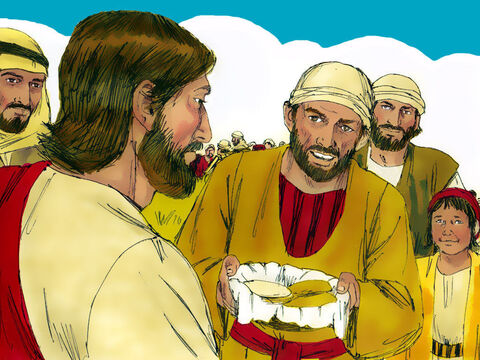Bread in the bible
During the time of Jesus, bread was made using simple and traditional methods many if which have been unchanged for centuries. The process involved a few basic ingredients and relied heavily on manual labour. Here’s an overview of how bread was made during that time:
Harvesting: Wheat or barley, the common grains used for breadmaking, were harvested from fields. The stalks were cut, bundled, and threshed to separate the edible grain from the chaff (husks).
Winnowing: The harvested grains were tossed into the air or subjected to a gentle breeze, allowing the chaff to blow away while the heavier grains fell back to the ground. This process is known as winnowing and helped separate the unwanted husks from the grain.
Grinding: The grains were then ground into flour using stone mills. These mills consisted of two large flat stones, with the grain being crushed and ground between them manually or using animal power. The resulting flour was coarse and often contained small bits of husks.
Kneading: The flour was mixed with water to form a dough. This process was typically done by hand in a large bowl or on a flat surface. The dough was repeatedly stretched, folded, and pressed to develop the gluten, which gave the bread structure and elasticity.
Leavening: In biblical times, leavened bread (bread that rises) was less common than unleavened bread (bread without yeast). Unleavened bread was made by simply mixing flour and water and then baking it. However, for leavened bread, a portion of dough from a previous batch of leavened dough, like our sourdough starter, was added to the new dough to initiate fermentation. The wild yeast present in the environment would then cause the dough to rise over time.
Shaping: The kneaded dough was shaped by hand into loaves or flat rounds (no rolling pin). The loaves were usually placed on baking trays or directly on the heated surface. A paddle could also be used to flatten the bread while on the stone
Baking was done on a stone oven or on hot coals or stones. The dough was placed in the oven or on the heated surface. Stone ovens were commonly used and would be preheated before the dough was baked.
As with all baking, there were regional variations but the general principles were similar throughout the ancient world.

Ancient style loaves for a multitude
Ingredients
Sourdough starter (first time)
- 100 g sourdough starter
- 50 g flour
- 50 g lukewarm water
Dough
- 300 g barley flour
- 150 ml lukewarm water the amount of water will vary on the flour
- 1 teaspoons salt
- 2 teaspoons honey or date syrup optional
- olive oil for greasing
Instructions
Sourdough starter
- Mix the sourdough starter ingredients in a bowl and leave for at least 4 hours or overnight.
- Traditionally the sourdough yeast is used the first time only. The next batch is dough is made by taking some dough from the previous day's dough and adding more flour and water.
The dough
- In a large bowl, combine the flour and salt. If desired, add honey or date syrup for a touch of sweetness. Mix the dry ingredients together.
- Gradually add warm water to the dry mixture while stirring continuously. Mix until a sticky dough forms. Adjust the water quantity as needed to achieve the right consistency.
- Transfer the dough to a clean, lightly floured surface. Knead the dough for about 10-15 minutes, until it becomes smooth and elastic. This helps develop gluten in the dough.
- Grease the same bowl with a little olive oil. Place the kneaded dough back into the oiled bowl. Cover the bowl with a clean cloth. Allow the dough to rise in a warm area for approximately 1 to 2 hours, or until it has doubled in size.
- Once the dough has risen, gently punch it down to release any trapped air bubbles. Divide the dough into smaller portions, shaping them into round or oval loaves.
- Preheat your oven to 200°C. While the oven heats, let the shaped loaves rest and rise for an additional 15-30 minutes.
- Place the loaves on a baking stone. Score the tops of the loaves with a sharp knife in a crisscross pattern or any design you prefer.
- Bake the loaves in the preheated oven for about 25-30 minutes, or until they turn golden brown and sound hollow when tapped on the bottom.
- Once baked, remove the loaves from the oven and let them cool on a wire rack. Allow them to cool completely before serving.
